
Brittany is a peninsula, historical country and cultural area in the north-west of modern France, covering the western part of what was known as Armorica during the period of Roman occupation. It became an independent kingdom and then a duchy before being united with the Kingdom of France in 1532 as a province governed as a separate nation under the crown.
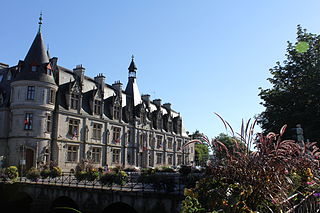
Finistère is a department of France in the extreme west of Brittany. Its prefecture is Quimper and its largest city is Brest. In 2019, it had a population of 915,090.
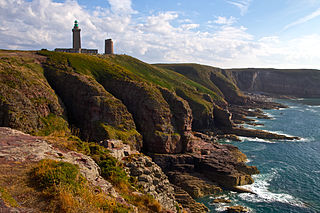
Brittany is the westernmost region of Metropolitan France. It covers about four fifths of the territory of the historic province of Brittany. It is one of two regions in Metropolitan France that do not contain any landlocked departments, the other being Corsica.

Loïc Gwenc'hlan Le Scouëzec was a Breton medical doctor, writer, and Grand Druid of Brittany.

Carhaix-Plouguer, commonly known as just Carhaix, is a commune in the French department of Finistère, region of Brittany, France. The commune was created in 1957 by the merger of the former communes Carhaix and Plouguer.

Long before World War II, the various Breton nationalist organizations were often anti-French and anti-colonialist, opposed to the Central Government's policy of linguistic imperialism, and critical to varying degrees of post-French Revolution-style Republicanism. Some Breton nationalists were openly pro-fascist. The extent to which this led Breton nationalists into collaboration with the Axis Powers and their motivations, remains a matter of often bitter historical controversy and debate.
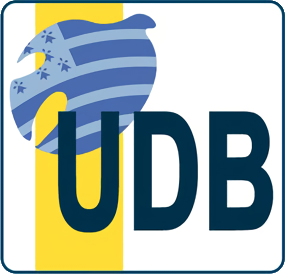
Breton Democratic Union is a Breton nationalist, autonomist, and regionalist political party in Brittany and Loire-Atlantique. The UDB advocates devolution for Brittany as well as the promotion of its regional languages and its associated culture.

The Regional Council of Brittany is the regional legislature of the region of Brittany in France. It is composed of 83 councillors, elected in 2015, in office for six years until 2021.

The Breton Party is a social-democratic and social-liberal nationalist party which aspires to the creation of an independent republic of Brittany, within the European Union.
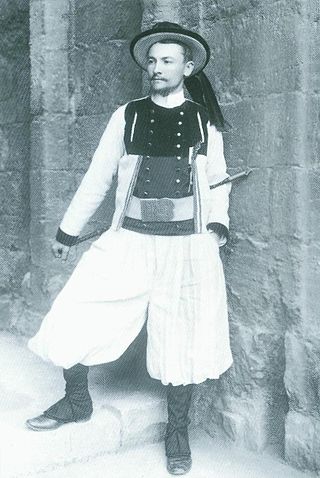
François-Joseph-Claude Jaffrennou was a Breton language writer and editor. He was a Breton nationalist and a neo-druid bard. He is also known as François Taldir-Jaffrennou, since he also used the bardic name Taldir. He was one of the pioneers of the Breton autonomist movement.

The Revolt of the papier timbré was an anti-fiscal revolt in the west of Ancien Régime France, during the reign of Louis XIV from April to September 1675. It was fiercest in Lower Brittany, where it took on an anti-lordly tone and became known as the revolt of the Bonnets rouges or revolt of the Torrebens. It was unleashed by an increase in taxes, including the papier timbré, needed to authenticate official documents.

Serge Duigou is a French historian, specialising in the history of Brittany. His work focuses on Breton maritime history, the women's place in the Breton society, the links between Brittany and modernity, the migratory movements from and to Brittany, the Breton popular revolts. His numerous conferences aim to make Breton history known to as many people as possible.
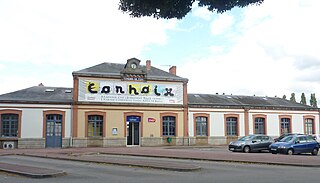
Gare de Carhaix is a railway station serving the town Carhaix-Plouguer, Finistère department, western France. The station is served by regional trains to Guingamp. The station was the hub of the Réseau Breton.

Poher is an ancient principality that emerged in the Early Middle Ages in Cornouaille in west-central Brittany. Its capital was the Gallo-Roman city of Vorgium, capital of the Osismii, which became Carhaix after the fall of the Roman Empire. Archaeological excavations scheduled since 1999 show that, even if the city lost its function as capital after the 4th century, it was nonetheless a stronghold and major strategic crossroads.

Richard Ferrand is a French politician of La République En Marche! (LREM) who served as President of the National Assembly from 2018 to 2022. He had served as a member of the National Assembly for Finistère's 6th constituency from 2012 to 2022. A longtime member of the Socialist Party, he was LREM's General Secretary from October 2016. He briefly served as Minister for the Cohesion of Territories between May and June 2017 before resigning due to nepotism accusations. Following his resignation, he became the leader of the party's group in the National Assembly in June 2017 and then was elected to the Chamber's Presidency in September 2018.

Ronan Leprohon was a 20th-century French Breton academic historian, politician, and lifelong Breton nationalist.

Georges Cadoudal was a French sonneur and musician. Alongside Étienne Rivoallan, he formed a group of sonneurs dedicated to the revival of Breton music after World War II. A founding member of Bagad Bourbriac, he was its penn-soner from 1953 to 1964.

France Bleu Breizh Izel - also known as France Bleu Lower Brittany, is a public service generalist radio station located in Lower Brittany, where Breton is traditionally spoken. The broadcast network and by extension Lower Brittany is made up of Finistère, western Côtes-d'Armor and western Morbihan. It was established on 3 August 1982 under the name Radio Bretagne Ouest.
Mélanie Thomin is a French politician of the Socialist Party (PS) who was elected a Deputy for Finistère's 6th constituency under the NUPES party label during the 2022 French legislative election.

The Roc'h Trédudon attack was the destruction of the Roc'h Trédudon transmitter in Plounéour-Ménez, Finistère, by a series of bombs on the night of 13 to 14 February 1974. It was claimed by the Breton independence organization Breton Liberation Front (FLB), and deprived western Brittany of television for several weeks. It took place against a backdrop of the revival of the Breton nationalist movement, and sparked off fierce reactions and controversy as to the true identity of the perpetrators.



















